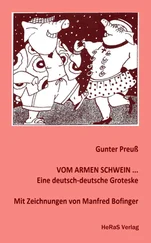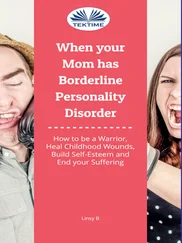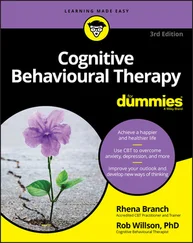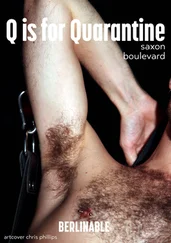Hannie van Genderen - Schema Therapy for Borderline Personality Disorder
Здесь есть возможность читать онлайн «Hannie van Genderen - Schema Therapy for Borderline Personality Disorder» — ознакомительный отрывок электронной книги совершенно бесплатно, а после прочтения отрывка купить полную версию. В некоторых случаях можно слушать аудио, скачать через торрент в формате fb2 и присутствует краткое содержание. Жанр: unrecognised, на английском языке. Описание произведения, (предисловие) а так же отзывы посетителей доступны на портале библиотеки ЛибКат.
- Название:Schema Therapy for Borderline Personality Disorder
- Автор:
- Жанр:
- Год:неизвестен
- ISBN:нет данных
- Рейтинг книги:3 / 5. Голосов: 1
-
Избранное:Добавить в избранное
- Отзывы:
-
Ваша оценка:
- 60
- 1
- 2
- 3
- 4
- 5
Schema Therapy for Borderline Personality Disorder: краткое содержание, описание и аннотация
Предлагаем к чтению аннотацию, описание, краткое содержание или предисловие (зависит от того, что написал сам автор книги «Schema Therapy for Borderline Personality Disorder»). Если вы не нашли необходимую информацию о книге — напишите в комментариях, мы постараемся отыскать её.
Shema Therapy for Borderline Personality Disorder
Schema Therapy for Borderline Personality Disorder
Schema Therapy for Borderline Personality Disorder — читать онлайн ознакомительный отрывок
Ниже представлен текст книги, разбитый по страницам. Система сохранения места последней прочитанной страницы, позволяет с удобством читать онлайн бесплатно книгу «Schema Therapy for Borderline Personality Disorder», без необходимости каждый раз заново искать на чём Вы остановились. Поставьте закладку, и сможете в любой момент перейти на страницу, на которой закончили чтение.
Интервал:
Закладка:
The patient doesn't want to talk about her problems
The patient is rationalizing
The patient is angry or arrogant in a controlled way in order to keep you at a distance
The patient talks a lot about nothing
The patient is complaining about physical problems extensively
The patient whines (seems to cry, but the therapist doesn't feel empathy)
The patient is completely worn‐out without a clear cause
The patient always wants to talk about actual problems and expects an immediate solution
The tone of voice is flat
The abandoned/abused child
The abandoned/abused child is often referred to as “Little …” (= the name of the patient). In our examples, we refer to the patient as Nora. Therefore, when in this mode she becomes “Little Nora.”
Little Nora is sad, desperate, inconsolable and often in complete panic (See ST step by step 5.01). When in this mode the patient's voice itself often changes to that of a child. Her thoughts and behavior become that of a four‐ to six‐year‐old. She feels alone in the world and is convinced that no one cares about her. The basic belief in this mode is that she can trust no one. Everyone will reject, abuse, or eventually abandon her. The world is a threatening, dangerous place that holds no future for her.
Little Nora thinks in terms of black and white. She demands constant and immediate reassurance and solutions to her problems. She is incapable of helping herself. There is a great chance that during the first phase of the therapy, the therapist will face Little Nora mainly in situations of crisis. In the early stage of the therapeutic process, it is unlikely the patient will show her abandoned child side at other moments (for a sample dialogue, see Chapter 9, “Treatment Methods for the Abandoned and Abused Child”).
When the patient is in this mode, she latches onto the therapist in the hope that he holds the solutions to all of her problems. She expects complete and constant comfort and compassion from him. During this mode the therapist often feels overwhelmed by the patient's expectations of him. In an attempt to address her cries for help, he can have the tendency to look for practical solutions far too quickly. On the other hand, he may also attempt to rid himself of the patient by referring her to a crisis center too quickly. When Nora is in a panic, all practical solutions appear unfeasible. Little Nora cannot comprehend that the crisis will ever come to an end.
Nora's feelings of desperation and the therapist's feelings of incompetence will only become greater if the therapist continues to advise practical solutions. Should she be referred on too quickly, Little Nora becomes even more desperate as she feels misunderstood, abandoned, and rejected.
The therapist must allow Little Nora's presence in these sessions. He must be supportive of her, validate her feelings, offer a safe haven, encourage her to bond with him as a therapist, and address her past abuse. In short, he must offer her what she was most likely denied during her childhood.
How to recognize the abandoned/abused child during a session
The patient is overwhelmed by sad or anxious emotions
The patient is helpless
The patient acts as if she is totally dependent on the therapist
The patient wants the therapist to solve her problems
The therapist empathizes a lot with the patient
The tone of voice is of a little child (sad or panicky)
The therapist experiences a strong emotional appeal to solve the emotional pain of the patient and to not abandon her.
The angry/impulsive child
The other child mode in BPD is that of the “angry/impulsive child.” The beginning of therapy is often overshadowed by desperation (Little Nora) and shame (punitive parent). Because of this, one does not often see the angry/impulsive child in the beginning of the therapy.
Angry Nora is a furious, frustrated, and impatient young child (approximately 4 years of age) who has no regard or consideration for others (See ST step by step 5.02). When in this mode, the patient is often verbally and, at times, physically aggressive and acrimonious toward others including her therapist. She is incensed that her needs are not met, and her rights go unacknowledged.
Angry Nora is convinced it is better to take all you can, or you will end up with nothing at all. She is convinced she will be taken advantage of. She is not only furious, but also wants everyone to see just how badly she has been treated. She does this by attacking others (verbally or physically), hurting herself, attempting to kill herself, or even others, as a form of revenge. This, of course, is the extreme form of Angry Nora. A milder way in which Angry Nora may show the therapist her anger is by not attending sessions or stopping therapy all together.
While the differences between the angry child and the angry protector are not always clear, they can usually be observed in how the anger is presented. The angry child is impulsive and unreasonable. She refers to issues that are completely unrelated and irrelevant. The angry protector is more controlled and more likely to be cynical than furious (see Chapter 9, “Treatment Methods for the angry/impulsive child,” for a sample dialogue).
When Little Nora also has an undisciplined/impulsive mode (see ST step by step 5.04 and 5.05) she might also feel out of control and frustrated. She feels that her needs have to be satisfied immediately and she cannot tolerate discomfort (pain or conflict). This side looks more like a spoiled child but is in fact also a deprived child. The therapist should keep in mind that this behavior is due to emotional and pedagogical deprivation. Little Nora has not learned how to cope with difficulties.
The most important characteristic of this mode is the impulsive way BPD patients try to get their needs met. The patient may, for instance, have sexual contacts with people she doesn't really know, in an attempt to get a feeling of being of value and cared for. Other examples are impulsive buying, impulsive alcohol or drug use, and impulsive eating ( Table 2.1). Such behaviors are related to this mode when they are impulsive (the patient did not really contemplate the long‐term risks), often motivated by a sort of rebelliousness against the punitive mode and have the aim of need satisfaction. Alcohol and benzodiazepine use, especially in combination, might lead to a loss of (the already problematic) inhibition of these kinds of impulses. The general aim of the treatment is that patients learn to acknowledge their needs (instead of trying to detach from them) and develop healthier ways of getting their needs met.
The purpose of therapy is to teach the patient that she can be angry, but that there are other ways to express this emotion than the impulsive and extreme manner she currently adheres to.
Outbursts of rage are impulsive and unexpected. Should these take place during a session, the therapist should attempt to remain calm and tolerate the anger. He should only limit the display of anger when the patient threatens to damage persons or property, or when the expression of her anger is so humiliating that the therapist feels his limits are violated.
Table 2.1 Examples of impulsive behavior
| Spending too much money Run up debts | Shopping without a plan. Buy too many or too expensive things in order to comfort yourself |
| Impulsive, unprotected sex | Having impulsive sexual contact with someone who is nice to you, while in fact you are looking for attention and love |
| Quit your job suddenly | When you have a problem at work and you feel treated unfair, you immediately conclude that this is not the right job |
| Alcohol and drugs abuse | Using too much alcohol and drugs too much because you don't care about the consequences |
| Get pregnant without a plan | Wanting a child to have company |
How to recognize the angry/impulsive child during a session
Интервал:
Закладка:
Похожие книги на «Schema Therapy for Borderline Personality Disorder»
Представляем Вашему вниманию похожие книги на «Schema Therapy for Borderline Personality Disorder» списком для выбора. Мы отобрали схожую по названию и смыслу литературу в надежде предоставить читателям больше вариантов отыскать новые, интересные, ещё непрочитанные произведения.
Обсуждение, отзывы о книге «Schema Therapy for Borderline Personality Disorder» и просто собственные мнения читателей. Оставьте ваши комментарии, напишите, что Вы думаете о произведении, его смысле или главных героях. Укажите что конкретно понравилось, а что нет, и почему Вы так считаете.












